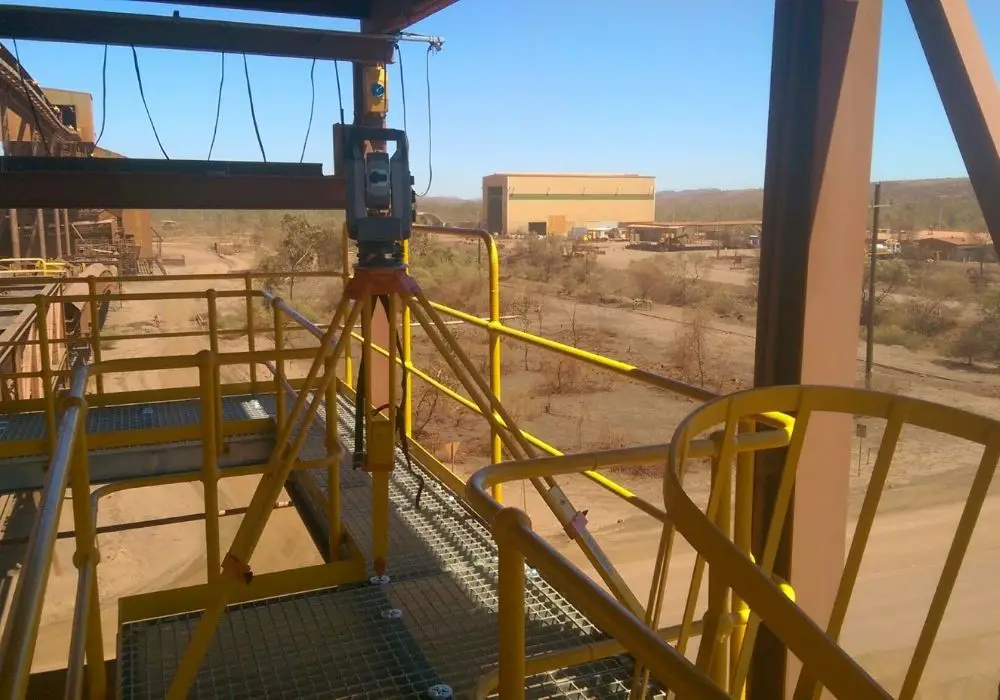Trimble’s Direct Reflex Plus refers to the EDM technology that allows Trimble’s total stations to measure surfaces and objects without a prism. The Plus is a reference to the recent improvement in the DR measurement range.
Direct Reflex or DR measurements are commonly referred to as a reflectorless measurement by surveyors, as you do not need to use any type of reflector like a surveyor’s prism to measure a distance.
Traditionally a surveyor would need to be able to access an object to survey it. They would need to be able to get close enough that they can then place their prism accurately where a measurement is required, and then wait for a measurement to be done.
Now as long as the object that needs to be surveyed is visible from the total station, and within the measurement range of the total station, you can measure the object using Trimble’s Direct Reflex EDM measurement capability.
How Do Direct Reflex (DR) Measurements Help?
Being able to measure objects reflectorlessly has increased the productivity of surveyors in the field. There are many applications and scenarios when an object needs to be measured but it can’t be accessed safely or cost-effectively, some include:
- Setout and as-built surveys of marine piles.
- Surveying inaccessible points on buildings like roof peaks or cladding corners.
- Measuring the height of tall objects like tower cranes, to verify that they will clear the surrounding building’s highest points.
- Measuring buildings adjacent to the subject lot of a feature survey.
There are many more applications that I have not listed above.
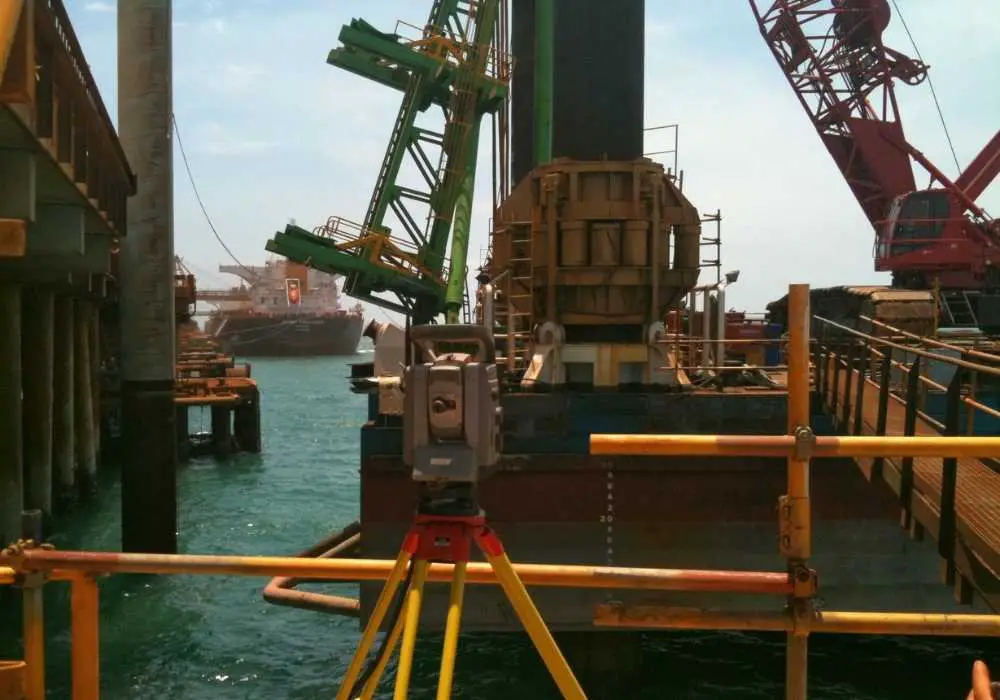
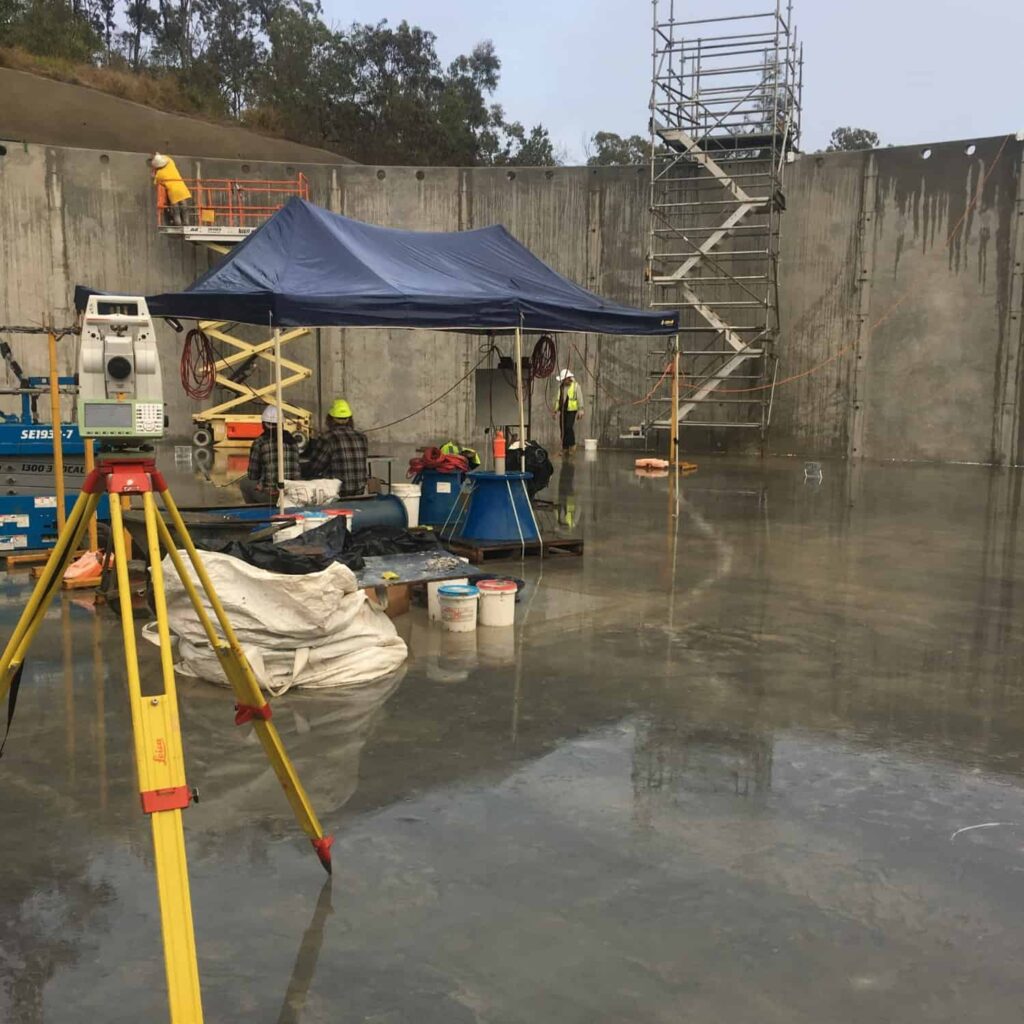
How Accurate Are Trimble Direct Reflex (DR) Measurements?
| Trimble S9 HP | Trimble S9 | Trimble S7 | Trimble S5 | |
|---|---|---|---|---|
| EDM technology | DR HP | DR Plus | DR Plus | DR Plus |
| EDM Accuracy | 3.0mm + 2ppm | 2.0mm + 2ppm | 2.0mm + 2ppm | 2.0mm + 2ppm DR |
The user can modify the settings which will control the accuracy and precision of a DR measurement. The settings include:
- Standard Deviation. By default, the standard deviation set for DR measurements in Trimble total stations is 0.003 metres. If you increase the standard deviation error this will reduce the amount of time it takes to get a measurement but will decrease the accuracy of the measurement. The purpose of this setting is to filter out and ignore any outlier observations from the final distance calculation.
- Weak Signal. You have the ability to accept a measurement with a weak signal. This might occur when measuring objects with poor reflectiveness.
- Min to Max Range. You can set the maximum range of reflective measurements. You might use this if you are measuring a small object that is 50 meters away, and the background objects are all 150 meters away.
Another factor that can affect the accuracy of reflectorless measurements is beam divergence. The further a beam needs to travel to an object, the wider the beam is. This won’t affect measurements when you are square to the object, but if you are trying to measure round surfaces or corners this could impact the accuracy of your measurement.
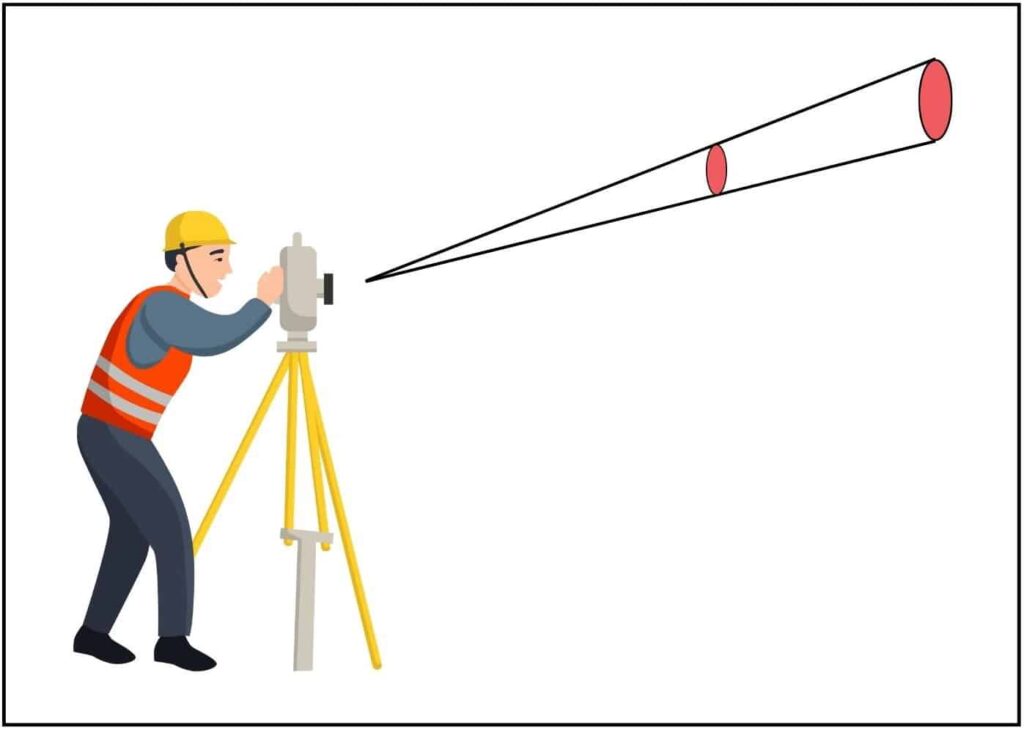
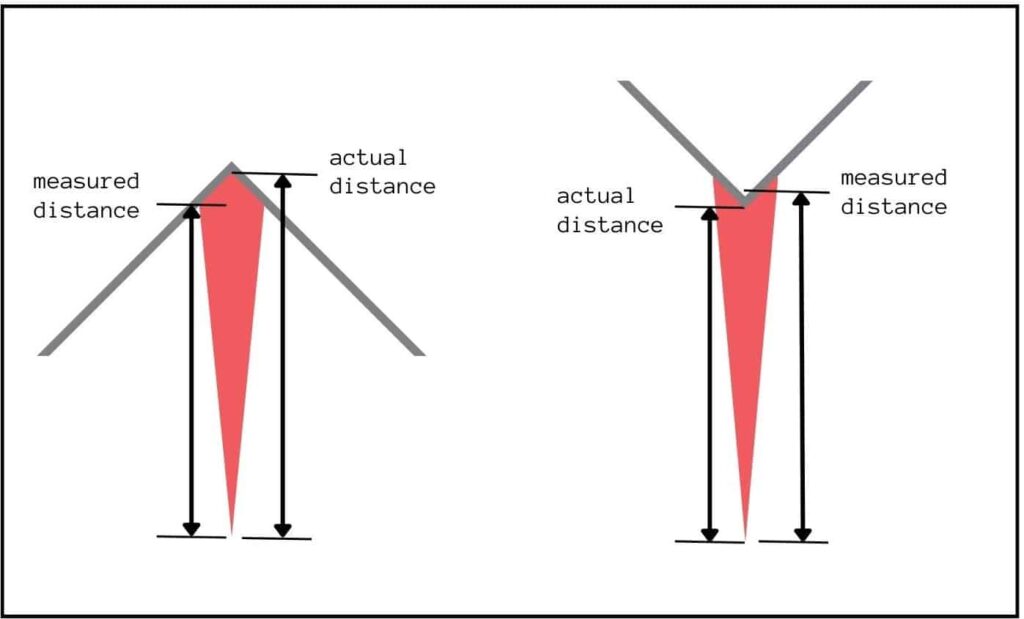
To overcome beam divergence errors with reflectorless measurements, you can measure points that are on a flat surface, and use your office software to calculate the intersection of the two surfaces in the below examples.
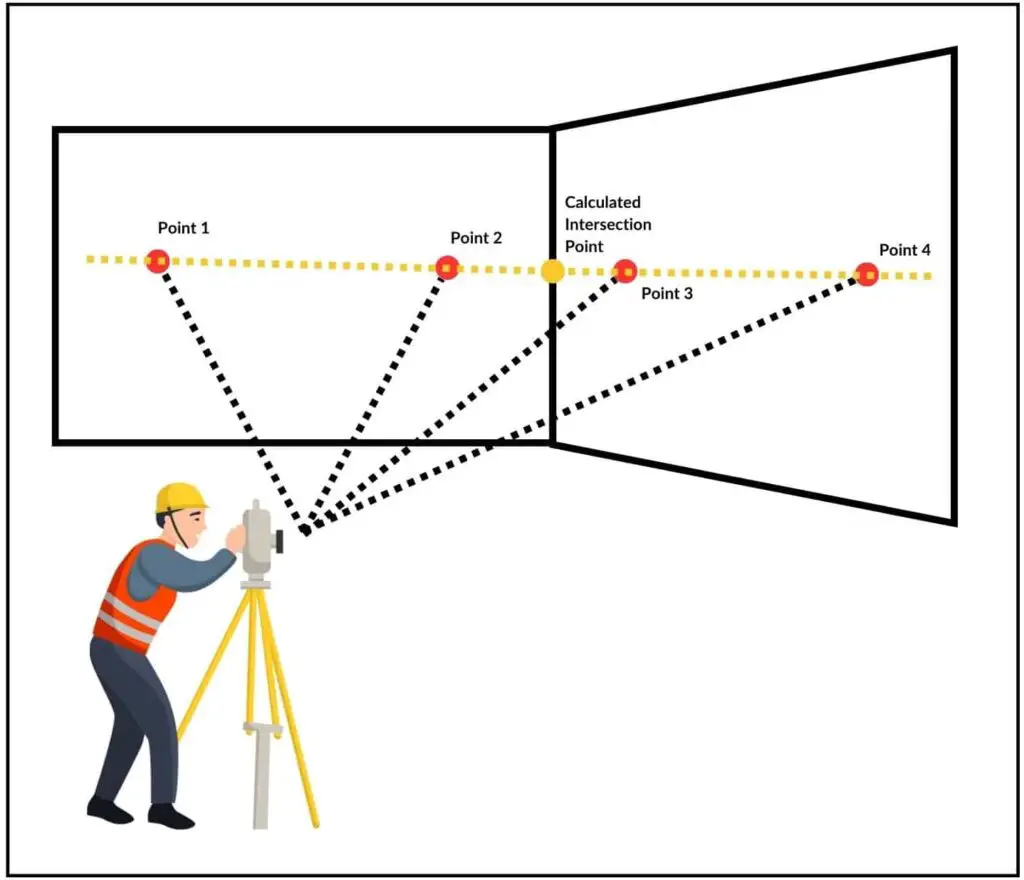
Trimble Direct Reflex Measurement Range
| Good | Normal | Difficult | |
|---|---|---|---|
| Description | Good visibility, low ambient light. | Normal visibility, moderate sunlight, some heat shimmer. | Haze, object in direct sunlight, turbulence. |
| White card (90% reflective) | 1,300 meters | 1,300 meters | 1,200 meters |
| Grey card (18% reflective) | 600 meters | 600 meters | 550 meters |
Trimble’s Direct Reflex has a minimum measurement distance of 1 metre. If you try and measure a distance shorter than that, it is unlikely it give you a measurement value.
Using the DR extended range mode can increase the measurement range to 2,200 meters.
Sources
Sources for this post are:

